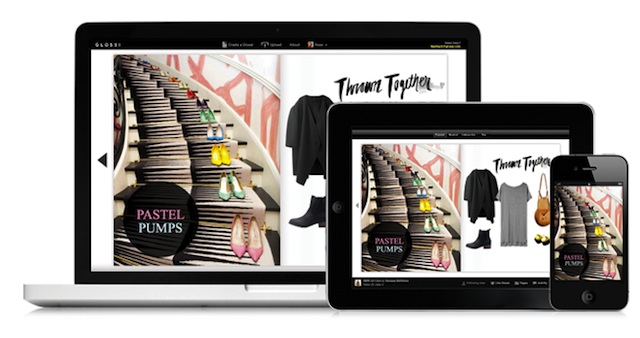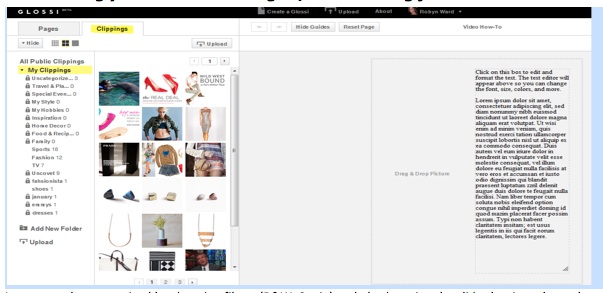Glossi, the digital publishing platform from social commerce company ThisNext, is going into public beta today, which means that a much broader group of people can use Glossi’s tools to build and publish their own online magazines (though you still need an invitation).
CEO Matt Edelman said the company built Glossi in response to a number of different trends, including “the growth of visually based content and social platforms.” To take advantage of those trends, Glossi allows both brands and individuals to publish content in a format that mirrors print magazines pretty closely while also incorporating rich media and digital distribution. (Edelman isn’t the only one who sees an opportunity here; through their company AVOS Systems, YouTube co-founders Chad Hurley and Steve Chen have also launched a magazine publishing platform called Zeen.)
“We saw a lot of these trends and believed the magazine format can really speak to the breadth of devices in a way that other formats can’t,” Edelman said, later adding, “The opportunity to put multiple types of media into a single published product that you don’t have to scroll through in order to enjoy is very exciting. It’s exciting for creators; it’s exciting for designers.”
I haven’t created a Zeen or a Glossi of my own, but Edelman did take me through the Glossi-building process, and even though he may have skipped over some of the more time-intensive steps, it did seem like a pretty intuitive process. Users upload images from their computers or other websites, organize those images (“clippings”) into folders, use a drag-and-drop interface to lay them out in a magazine format, apply filters as desired, and then add text and video (the latter from YouTube or Vimeo).
Reading a Glossi is pretty similar to reading a magazine — you just page back-and-forth, and since both the content and images tend to be pretty large, you don’t need to fiddle with the zooming (which is good since there’s no obvious zoom button). The magazines are published on the Glossi website, they can be shared on social networks, and they can also be embedded elsewhere — for example, if a fashion company that creates a catalog on Glossi, they probably want to feature it on their own site. If you like a publisher, you can follow them to see future Glossies. The company plans to release mobile apps in the future.
To get a sense of how publishers are already using Glossi, here’s a sample from Lucky Magazine highlighting content from its January issue, another from RentTheRunway showcasing New Year’s fashion, and a third from Brit Morin’s Brit & Co. with DIY fashion and tips. It’s probably not surprising, given Glossi’s connection to ThisNext and its emphasis on imagery, that fashion dominates the platform (at least judging by the Glossies featured in the company’s press release and website). Edelman said he expects that Glossies will be built primarily by professional publishers at first, but individuals are doing it too, and he plans to add more tools next year that should make magazine creation more accessible to a general audience.
The tools and the content are both free. Edelman said the company will be pursuing “multiple revenue strategies” in the future, including advertising, premium tools for content creators, and the addition of purchasing capabilities to the Glossies themselves.

